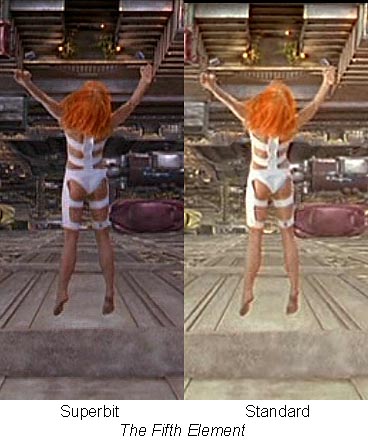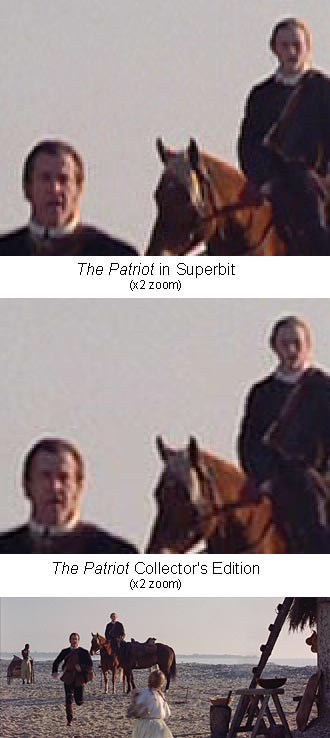 somewhat thicker than the norm. And the records were cut at half the normal speed to better transfer the high frequency content of the master tapes.
somewhat thicker than the norm. And the records were cut at half the normal speed to better transfer the high frequency content of the master tapes.
Back in the 1970s high fidelity sound systems were getting good. Very good. So good that a major limitation in the quality of the playback system was the source: the records. Soon there were special high fidelity releases of LPs, notably by Mobile Fidelity Sound Lab. Its 'Original Master Recording' releases used high quality vinyl,  somewhat thicker than the norm. And the records were cut at half the normal speed to better transfer the high frequency content of the master tapes.
somewhat thicker than the norm. And the records were cut at half the normal speed to better transfer the high frequency content of the master tapes.
The notable point of this was that the LPs were fully compatible with existing equipment. And so it is with Columbia TriStar's Superbit DVDs.
First released in 2002 in the United States, the company has now made a dozen titles available in Australia (in PAL video format, of course). The company claims they are of noticably higher quality than standard DVDs. This claim is easy to check because all have been previously released here without the Superbit treatment
 The video on a DVD is compressed using MPEG2, a lossy system. This means it throws away some of the data.
The video on a DVD is compressed using MPEG2, a lossy system. This means it throws away some of the data.
MPEG2 is a highly efficient compression system. It not only compresses each video frame, it compresses across time by delivering just one out of twelve or fifteen original frames, and then providing information about how the rest differ from those frames. It is also a variable bit rate system so that sections of video that compress well can be squeezed into even smaller packages, while action sequences or parts with a lot of detail can be provided with more data.
PAL video on DVD, if it weren't compressed, would require over 80 megabits per second. The DVD specification allows a maximum of just 10 megabits per second, and a typical average bit rate for a DVD is around four or five megabits per second.
The idea behind Superbit is to leave virtually all extras off the disc so that all its capacity is available for video and audio. Even the menu is static and plain. All this permits a higher bit rate.
As you can see from this table, the video bit rates of the Superbit titles are between 24 and 108% higher than those of the original releases.
| Average video bit rate* of original (Mbps) | Average video bit rate* of Superbit version (Mbps) | Increase in average video bit rate | |
|---|---|---|---|
| Desperado | 3.79 | 7.89 | 108% |
| Dracula | 5.79 | 7.17 | 24% |
| The Fifth Element | 3.53 | 6.61 | 88% |
| Gattaca | 3.54 | 6.78 | 91% |
| Hollow Man | 4.42 | 7.09 | 60% |
| The Patriot | 4.25 | 5.25 | 24% |
| Vertical Limit | 4.25 | 6.89 | 62% |
| * The video bit rate was estimated by adding the sizes of the *.VOB files constituting the main feature, dividing by the run-time of the movie, and then subtracting the bit rates for all the audio tracks. | |||
There's one other very nice feature of the Superbit discs: all feature a seamless layer change. In other words, there is no pregnant pause during the movie while the laser switches focus between the first and second layers.
In summary, with this equipment the video quality was markedly improved. Now, to the individual discs.
 Since the original version of Desperado appeared on a single layer DVD, and since it has the shortest run time of any of these movies (100 minutes), the Superbit version enjoys a major boost in the bit rate. In fact, the video bit rate more than doubles. The improvements are a great deal more detail, manifesting as a sharper focus. Also noticable were much smoother colour graduations in out-of-focus backgrounds, compared to the banded colours of the original disc.
Since the original version of Desperado appeared on a single layer DVD, and since it has the shortest run time of any of these movies (100 minutes), the Superbit version enjoys a major boost in the bit rate. In fact, the video bit rate more than doubles. The improvements are a great deal more detail, manifesting as a sharper focus. Also noticable were much smoother colour graduations in out-of-focus backgrounds, compared to the banded colours of the original disc.
Dracula benefited least of the seven discs, largely because of the modest 24% increase in its average video bit rate. This is on top of the original already enjoying a very high average bit rate of nearly 6 Mbps. Nevertheless, while most scenes were indistinguishable between the old and the new discs, there was a very slight sharping of detail on faces from time to time, and a steadying and smoothing of distantly shot 'scenes'. This was most noticable in the 'shot' of late 19th century London immediately after the prologue.
An oddity in this collection was The Fifth Element. The original disc was mastered in France and features French-language credits. All the other movies seem to have used the same high definition master for both standard and Superbit versions. The differences with this movie were quite marked. The most obvious change was an alteration in colour balance. The original has a warm (yellow) caste, the Superbit version's colours are much more natural in tone. The pores on Bruce Willis' face are easily discernible with Superbit, fuzzy and out of focus on the original. This seems an odd thing to say about a disc that has been regarded as an excellent demonstration of DVD (despite being a single layer disc), but this shows how good Superbit can be.
The original Gattaca disc was double sided single layer, with a widescreen version on one side and pan and scan on the other. Superbit increases the video data by over 90 per cent and this, once again, is evident in a much sharper focus and greater detail. It also benefits by removing a lot of spurious noise that, I now realise, had marred the original release. The tan panels of Gattaca really are smooth, not dotty.
 Paul Verhoeven is a director who, for the most part in recent years, has made movies with second-rate stories and the most extraordinary special effects imaginable. And so it is with Hollow Man. Even though the original movie was on a dual layer disc, only 63% of the space was available for video. The Superdisc version actually has less data overall than the original, but 99% of it is used by the movie, so the video bit rate gets a big boost: up by 60%. This has a quite noticable effect, not on the computer generated wizardry (the insides of human and animal bodies), but on the naturally shot elements. Closeup faces are clearly more detailed, yet smoother without a hint MPEG-blotches. Out-of-focus backgrounds are noticably more coherent than with the original disc.
Paul Verhoeven is a director who, for the most part in recent years, has made movies with second-rate stories and the most extraordinary special effects imaginable. And so it is with Hollow Man. Even though the original movie was on a dual layer disc, only 63% of the space was available for video. The Superdisc version actually has less data overall than the original, but 99% of it is used by the movie, so the video bit rate gets a big boost: up by 60%. This has a quite noticable effect, not on the computer generated wizardry (the insides of human and animal bodies), but on the naturally shot elements. Closeup faces are clearly more detailed, yet smoother without a hint MPEG-blotches. Out-of-focus backgrounds are noticably more coherent than with the original disc.
The original Vertical Limit is another movie which occupies just 63% of the disc's capacity. This increases to 99% in Superbit, delivering a sharper focus and, in the many scenes of objects (helicopters, people, whatever) in front of snow, a noticable reduction in haloing.
The Patriot is a long movie at 158 minutes. The original disc has a few extras, but partially salvages the situation by using the smallest chunk of data of all these discs for audio (832 kbps). Still, the sheer length means that the Superbit format only increases the video bit rate by 24% (the same as Dracula. Consequently I wasn't expecting much difference. Yet virtually every scene in the movie benefited. The change wasn't so much in detail, but in overall smoothness, particularly in faces. There seems to be on the original (noticable only by comparison) a fair amount of MPEG-induced blotchiness. This is gone with the Superdisc format, or at least very much reduced. Also reduced was the haloing on high contrast areas.
These improvements can be seen on the accompanying screen shots, which show a detail of the frame at 110 minutes and 44 seconds into the movie. Note, both these shots are from the higher quality 'I' frames (that is, complete video frames, not reconstructed from 'difference' data). They are long shots, too, which emphasises the differences. Look at the halo around Heath Ledger. It is much narrower in the Superbit version, and there is very much less spurious background noise. Note also the splotchiness of his forehead in the old, and the relative smoothness of the new. Look at the darker side of Mel Gibson's nose. In the Superbit version the nostril is perceptibly traced, in the original he appears to have an unsightly tumour!
These improvements are generally not noticable on regular TVs. But with a fine projector and screen, they do enhance the viewing experience.
At nearly $50 each (now $39.95), Superbit DVDs suffer from premium pricing. They also suffer from an utter lack of special extras. This places the enthusiast in bit of a quandary: do they buy the better quality picture, or the disc with the extras? Hey, why not both?
© 2003 by Stephen Dawson
The other Superbit titles available are Crouching Tiger, Hidden Dragon; Das Boot; Gladiator; Shakespeare in Love and The Fast and the Furious. September 2003 will see the release of Hannibal; Men in Black II; The Mummy Returns and Bad Boys.